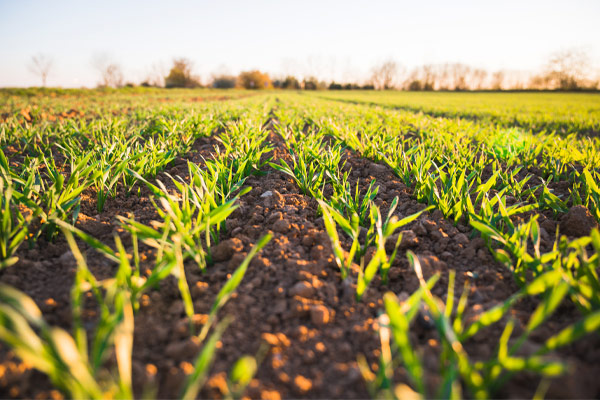Two Sides of Neolithic
August 2, 2022

Two Sides of Neolithic
What more can we learn from our hunter-gatherer ancestors?
Why do I keep returning to our hunter-gatherer ancestors?
We became fully anatomically modern humans approximately 200,000 years ago.
How can we judge how successful a given lifestyle was?
How long did it last?
As I just mentioned, we evolved into fully anatomically modern human beings (Homo sapiens) 200,000 years ago. Of that 200,000 years we were hunter-gathers 190,000 years. We only began to transition from hunter-gatherers to farmers less than 10,000 years ago
Do you think what we did for 190,000 years might be pretty ingrained in us?
So let’s compare and contrast 190,000 years of a hunter-gatherer way of life with the last 10,000 years of the Neolithic revolution way of life.
In other words, let’s compare being a hunter-gatherer, a forager with being a farmer, a producer. Let’s compare the lives and health of human beings who lived their lives fully in sync with their ecology, fully integrated into their natural environment with neolithic farmers. The agricultural revolution way of life leading up to 21st century humans living in a high-tech, fast-paced life of 5G smart phones, streaming videos, electric cars, the James Webb telescope transmitting high resolution images of the earliest forming galaxies over 13 billion years ago, and Deep Mind solving the protein-folding problem with 10 with 300 zeroes after it possible solutions.
For over 190,000 years our hunter-gatherer ancestors had almost no possessions. They only “owned” what they could carry. They moved 6 or 7 times a year when they reached the point of diminishing returns in their current environment. They moved to another stable source of water. They constructed simple shelters from easily accessible materials within easy reach of their new location.
Then they piled up like a bunch of puppies and took a very social nap.
As darkness approached, they built a fire for safety, warmth, and to cook their nuts, tubers, and, if lucky, meat. This band of hunter-gatherers socialized around their fire eating, gossiping, and telling stories. Often, they all danced around the fire – sometimes for hours.
There was no leader or hierarchy. Hunter-gatherer bands were highly egalitarian and mutually supportive. Everything was shared. No one ever went hungry. No one was left out. No one was lonely.
There was no avarice or greed. There was no hoarding or accumulating of material things. Nature supplied everything they needed. There was no class or status. Everyone shared the same fate. There was no famine or starvation. There were no pandemics. None. They did not live in close proximity with animals. They slept more or less outdoors in fresh air. They drank fresh water. Their food was fresh every day and, of course, totally organic.
As I shared last time, everyone got plenty of exercise (walking) everyday. Everyone was lean and fit. There was no obesity (zero) or diabetes (zero) or heart disease (zero).
All the children were loved and looked after by everyone in the band. Violence was virtually non-existent. If someone wanted something, they made it – a bow and arrow, an arrowhead, a trinket.
Everyone was always well-rested, relaxed, and joyful.
All their needs were easily met. One of the secrets to their happiness? They had very few needs.
Simplicity
According to one of the great economists of the twentieth century, John Maynard Keynes, hunter-gatherers had solved the fundamental economic problem of life.
Their needs were few and easily met. No hunter-gatherer suffered from the modern disease of more, always more.
They naturally lived a very Buddhist life. When they were thirsty, they drank. When they were hungry, they ate. When they felt tired, they laid down and slept.
Hunter-gatherers lived this way for 190,000 years.
What changed? When? Why?
The neolithic age began less than 10,000 years ago. Also commonly known as the agricultural revolution, human beings began the transition from nomadic hunter-gatherers to early farmers. They began to domesticate plants and animals. The middle east was one of the first locations of this profound set of changes.
As you will see, many of the so-called advances were two-edged swords.
Domesticating cereal grains like wheat meant exponentially greater yields than hunter-gatherers could forage from strictly wild strains.
More food could feed more people which in turn supported population growth.
Hunter-gatherers had a very light foot-print on their environment which quickly recovered as the hunter-gatherer band moved on every month or two.
Neolithic farming meant transitioning from a nomadic life to a sedentary life in one place.
As early farmers became more competent (irrigation, weeding their plot of ground, etc.) they became more and more dependent on the harvest. A poor harvest due to climate (less rain than usual, for example) or an insect infestation, meant hunger and potential famine.
Increased yields meant surplus. A good thing, right? But then, some one had to manage the surplus. Hence the beginning of different classes: field workers and managers. The birth of power. Envy. Greed. Resentment. Now some people had more than others. Some farmers (the 1%) were simply so much better, more competent, more innovative than the other 99%. The end of equality.
The domestication of animals meant that for the first time ever human beings slept in close proximity to animals and animal diseases and their vectors (fleas, ticks, lice etc.) which enables diseases to jump from one species to another (sound familiar?).
Expanding populations enabled by greater yields and more food meant population density which quickly made exponential leaps from small nomadic bands to villages to early cities. Population density enabled diseases to spread like wildfire.
Example: the Black Death of the Middle Ages wiped out 1/3 to ½ of the entire population of Europe in just a few short years.
Today, in less than 10,000 years, more people die from obesity than from starvation. Degenerative diseases (heart disease, cancer, diabetes, dementia - unknown for 190,000 years) are now the major causes of death.
And our planet which was pristine for 190,000 years and environmentally unaffected by a few million hunter-gatherers is now groaning under the impact of nearly 8 billion people and counting.
In less than 10,000 years, humans have so altered the climate of our planet that we as a species (as well as thousands of other species) are facing a growing existential crisis.
As Jared Diamond (the author of the non-fiction book Guns, Germs and Steel) wrote: “Agriculture was the worst idea humans ever came up with.”
For the bright, informed practitioners of The Joe Dillon Difference lifestyle, we enjoy the best of both worlds. We enjoy a nutritious diet and the highest quality of health in history as documented by your blood panels every 3 to 6 months. And practicing your Heavy Hands walking keeps your body lean and fit well into your 80’s, 90’s, and beyond.
The path of loving kindness begins with your body and your family’s bodies.
Those of us who practice mindfulness (one of the top ten Joe Dillon lifestyle essentials) are aware enough to appreciate and feel grateful for the wonderful lives we have.
I am looking forward to another couple of decades of sharing the best life has to offer with you and your family.
Thank you for listening.
Joe
 Cart (0)
Cart (0)

